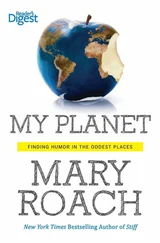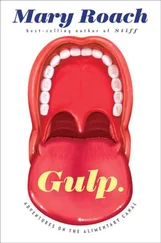Nonetheless, Bourland filled out a government purchase order for several cases of Paul Masson. Just before the sherry went into the packaging, someone mentioned it in an interview and letters from teetotaling taxpayers began arriving at NASA. And so, after having spent God knows how much money on the packaging, requisitioning, and testing of canned cream sherry, NASA scrapped the whole endeavor.
Had it flown, the Skylab sherry would not have been the first alcoholic drink requisitioned by a government as rations for a mission of national service. British Navy rations included rum until 1970. From 1802 to 1832, U.S. military rations included one gill—a little over two shots—of rum, brandy, or whisky with the daily allotment of beef and bread. Every hundred rations, the soldiers were also given soap and a pound and a half of candles. The latter could be used for lighting, barter, or, were you the tidy sort, melted down and used to coat your beef sandwiches.
NUTRITIONISTS WERE NOT entirely to blame for the inhumanity of early space food. Charles Bourland alerted me to something I’d overlooked: the abbreviation “USAF VC” after liquid diet promulgator Norman Heidelbaugh’s name. Heidelbaugh was a member of the Air Force Veterinary Corps. So was Robert Flentge, one of the editors of Manufacturing Requirements of Food for Aerospace Feeding , a 229-page handbook for preparers of astronaut foods. “A lot of the food science guys were military veterinarians,” Bourland told me. Dating back to the Aerobee monkey launches and Colonel Stapp’s work with the deceleration sleds, the Air Force has had colonies of test animals and, by necessity, veterinarians (or, for those who felt six syllables weren’t enough, “bioastronautics support veterinarians.”) According to the 1962 article “The Sky’s the Limit for USAF Veterinarians!” their responsibilities came to include “testing and formulating foodstuffs”—first animal and eventually astronautical. Bad news for space crews.
Veterinarians in charge of feeding research animals or livestock were concerned with three things: cost, ease of use, and avoiding health problems. Whether the monkeys or cows liked the food didn’t much enter into it. This goes a long way toward explaining butterscotch formula diets and Compressed Corn Flake and Peanut Cream Cubes. It’s what happens when veterinarians make dinner. Recalls Bourland, “The vets would say, ‘When I feed animals, I just mix up a bag of feed and take it out there and they get everything they need. Why can’t we do that with astronauts?’”
Sometimes they did. Witness Norman Heidelbaugh’s 1967 technical report, “A Method to Manufacture Pelletized Formula Foods in Small Quantities.” Heidelbaugh made Astronaut Chow! The top two ingredients, by weight, were Coffee-mate “coffee whitener” and dextrose/maltose, casting doubt on the vet’s claim that the human pellets were “highly palatable.” Again, deliciousness was not among this man’s overriding concerns. Weight and volume were. By those criteria, Heidelbaugh had a winner: “Caloric density would be sufficient to provide 2600 kcal [2.6 million calories] from approximately 37 cubic inches of food.”
Heidelbaugh’s space-saving methods sound extreme, but only until you read the solution proposed in 1964 by Samuel Lepkovsky, professor of poultry husbandry at the University of California, Berkeley. “If it were possible to find suitable astronauts who are obese,” Lepkovsky begins, seemingly unaware that he is nuts. [92] Sorry, I mean innovative. That is the adjective used by the author of Lepkovsky’s 1985 UC Berkeley obituary. Here we learn that Lepkovsky coauthored the first atlas of the chicken brain and isolated riboflavin from “several hundred thousand gallons of milk.” In what little spare time remained, he enjoyed dancing and amateur stock-market analysis, no doubt reaping great gains in dairy futures.
“An obese person with 20 kilograms of fat…carries reserves of 184,000 calories. This would provide over 2900 calories daily for 90 days.” In other words: Think of the rocket fuel that could be saved by not launching any food at all !
Starving your astronauts for the duration of the mission would resolve another early NASA concern: waste management. Not only was the act of using a fecal bag powerfully objectionable, but the end product stank and took up precious cabin space. “What the astronauts wanted to do is to just be able to take a pill and not eat,” says Bourland. “They talked about it all the time.” The food scientists tried but failed to make it happen. The astronauts’ fall-back solution was to skip meals, a deprivation made bearable by the knowledge of what awaited them inside the meal pouches.
Jim Lovell and Frank Borman would be stuck in the Gemini VII capsule for fourteen days. Fasting was no longer a viable waste management strategy. (Almost though: “Frank went, I think, nine days without having to go to the bathroom,” says Lovell in his NASA oral history transcript. At which point Borman announced, “Jim, this is it.” And Lovell replied, “Frank, you only have five more days left to go here!”) The new imperative at NASA was to develop food that was not only lightweight and compact, but also “low-residue.” “On the short missions of Mercury and Gemini,” wrote Borman in his memoir, “a bowel movement was rare.”
Cue the simulated astronauts again. Technical Report AMRL 66-147, “Effects of Experimental Diets and Simulated Space Conditions on the Nature of Human Waste,” details the fourteen very trying days of four men who served as digestive stand-ins for Lovell and Borman in the AMRL simulator. The first diet tested was the infamous all-cube diet: little sandwich cubes, “meat bites,” and miniature desserts. It was like dolls were running the kitchen.
The cubes were a digestive fiasco. The coating had been modified, with palm kernel oil used in place of lard. The palm oil waltzed through the gut largely undigested, giving the young airmen steatorrhea, and you and me a new vocabulary word. (Steatorrhea is fatty stool, as opposed to diarrhea, which is watery stool.) The steatorrhea created, to quote the San Antonio Express , [93] The space simulator diet tests were big news in San Antonio, Brooks Air Force Base’s home town. In addition to the Express story, the San Antonio Light ran a story. The advertisement that ran alongside was for Blue Cross/Blue Shield, then the nation’s leading insurer. The tag line, and I will send you a copy if you don’t believe me, reads, “Come on, San Antonio! Let’s all go No. 1!”
“gastrointestinal effects which were incompatible with efficient performance in an orbiting vehicle.” The reporter was being coy, but the technical paper spelled it out. Oily stools are foul-smelling and messy. Official descriptor number 3—“mushy but not liquid”—was the one most commonly applied by the subjects (whose day-to-day miseries were amplified by the task of inspecting and scoring their own waste). The report didn’t mention anal leakage, but I will. If you have oil in your stools—be it from Olestra or from space food cube coatings—some of it may ooze out. When you have one pair of underpants for a two-week spaceflight, anal leakage is not your pal.
Also tested was one of the liquid diets: forty-two days of milk-shakes. The thinking was that a liquid diet would cut down on both the volume of solid waste generated by the men, as well as their “defecation discharge frequency.” If you drink it, the thinking probably went, you’ll pee it. Not so. Because of all the dissolved fibers in the drinks, “daily mass” (forgive me, Father) sometimes increased significantly, in one case more than doubling.
IRONICALLY, IF YOU wanted to minimize an astronaut’s “residue,” you could have fed him exactly what he wanted: a steak. Animal protein and fat have the highest digestibility of any foods on Earth. The better the cut, the more thoroughly the meat is digested and absorbed—to the point where there’s almost nothing to egest (opposite of ingest). “For high-quality beef, pork, chicken, or fish, digestibility is about ninety percent,” says George Fahey, professor of animal and nutritional sciences at the University of Illinois at Urbana-Champaign. Fats are around 94 percent digestible. A 10-ounce sirloin steak generates but a single ounce of, as they say in George Fahey’s lab, egesta. [94] Egesta is my new favorite euphemism for “feces,” and an even better toilet brand name than Ejecto. Certainly better than Toto. Who names a toilet after a lapdog? Unless it’s Shit-Tzu. I’d buy a Shit-Tzu toilet.
Best of all: the egg. “Few foods,” writes Franz J. Ingelfinger, a panelist at the 1964 Conference on Nutrition in Space and Related Waste Problems, “are digested and assimilated as completely as a hard-boiled egg.” That’s one reason NASA’s traditional launch day breakfast is steak and eggs. [95] Could astronauts live on steak and eggs? Bad idea. Setting aside cholesterol issues, you’d be missing most vitamins. Fahey pointed out that even wild dogs don’t live on protein alone. “When they kill prey, they eat a smorgasbord of things.” It is a different smorgasbord than the one at Sweden House. “They’ll eat the stomach contents first usually.” Since the prey is usually some grazing animal, this is their side of vegetables.
An astronaut may be lying on his back, fully suited, for eight hours or more. You do not want to be eating Fiber One the morning before liftoff. (The Soviet space agency did not traditionally give cosmonauts steak and eggs before launch; it gave them a one-liter enema.)
Читать дальше












